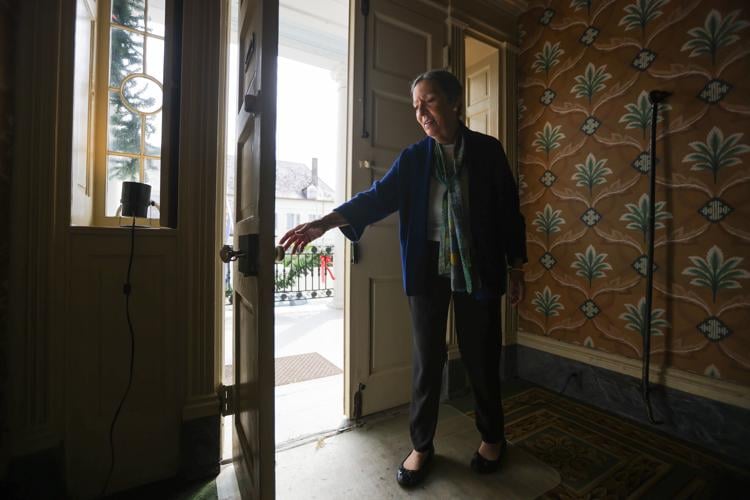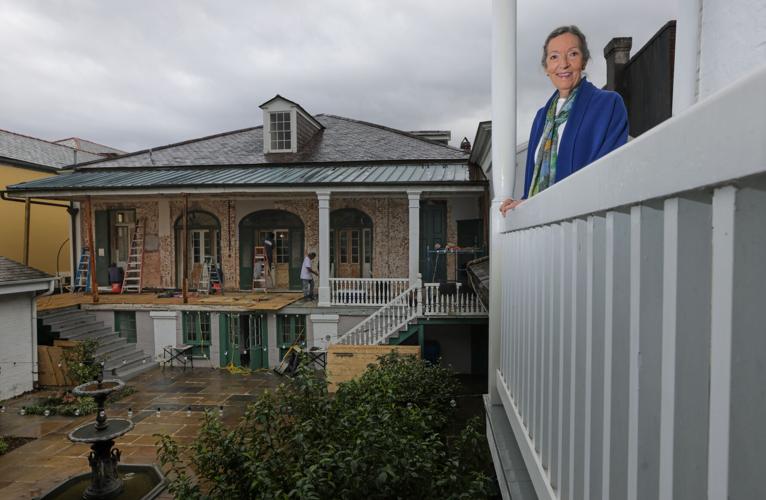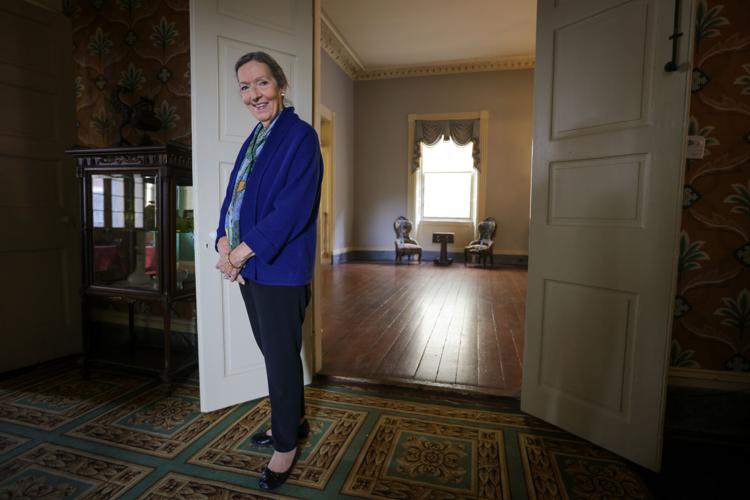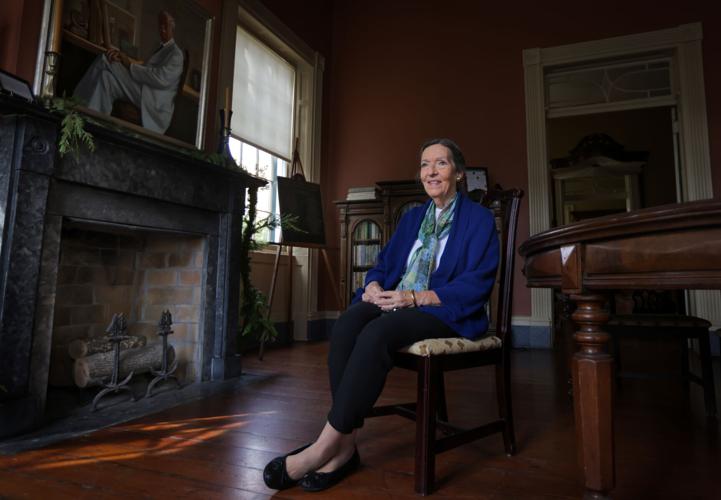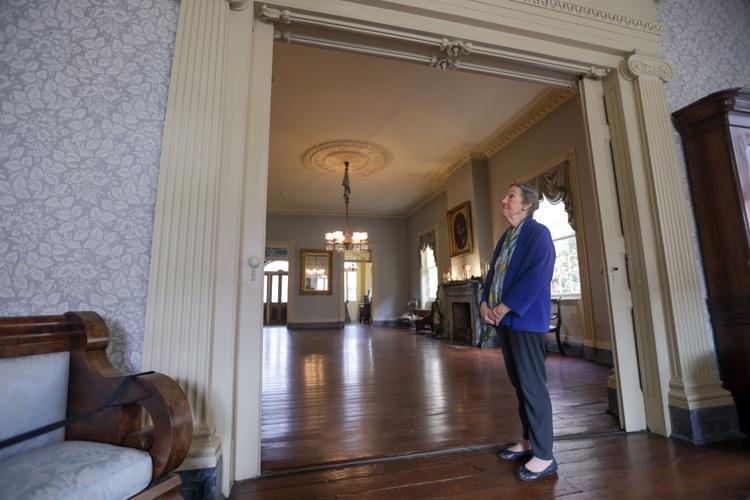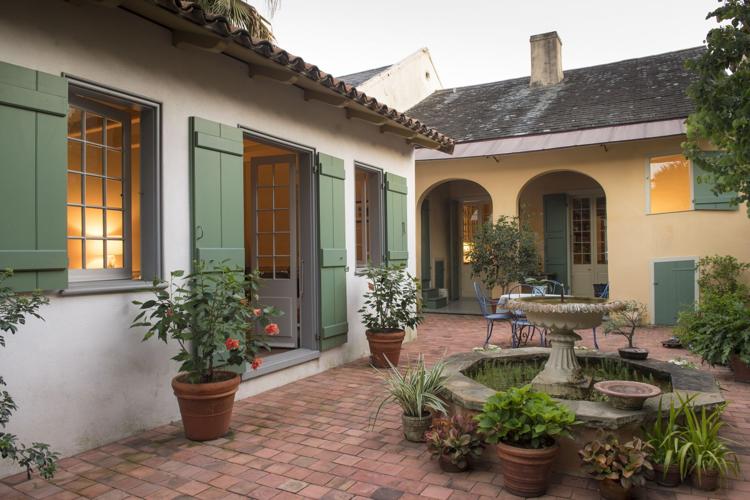This is the first story in The Guardians, a 6-part series highlighting those dedicated to saving and passing down New Orleans' unique heritage.
Ann Masson’s affinity for the past began when she was just four or five years old and her family took a trip to historic Williamsburg, Virginia. Masson loved the lemonade, ginger cookies and period costumes. But what captured her young imagination were the colonial-era buildings, which seemed to spring straight out of her storybooks.
“I didn’t understand space and time, and I thought we had traveled back in time to a past that somehow coexisted with the present,” Masson said. “I loved it.”
Nearly 70 years later, Masson is still in love with old buildings and has made it her life’s work to restore and preserve them. That’s no small thing in New Orleans, a 300-year-old city with one of the oldest living neighborhoods in the country.
Since the early 1970s, Masson has been on the front lines of efforts to protect historic structures. At times, she has been a foot soldier, stamping envelopes or running phone banks. Other times, she has been at the helm, leading organizations or writing articles for scholarly publications.
And at 74, she is still at it.
Right now, Masson is helping oversee the exterior restoration of the 200-year-old Beauregard-Keyes House in the French Quarter. She’s also writing a book for The Historic New Orleans Collection on the architect who designed St. Louis Cathedral. She is also campaigning to save Madame John’s Legacy from what she and other local preservationists believe is a destructive renovation by state-hired work crews.

Gallier House curator, Carolyn Bercier, Gallier House director, Ann Masson, French Quarter Festival Coordinator, Sandra Dartus, look through Christmas decorations.
On a recent visit to the Beauregard-Keyes House, Masson pointed out some of the architectural details that make the house so unique. Unlike most Spanish-style townhouses or French Creole cottages in the French Quarter, the BK House, built in the 1820s, is modeled after a country villa. There’s nothing else like it, she said, and preserving it in its original condition is important for future generations.
“Material culture holds our memory, it makes history tangible, and it makes the past come alive,” she said. “When you go to a historic site, you have an opportunity to commune with the past and learn from it.”
A seamless blend
Like the little girl who thought she was living at once in the colonial past and the mid-20th century, Masson today seems to have a foot in two worlds.

Ann Masson, an architectural historian, is seen at the Beauregard-Keyes House in the French Quarter on Friday, December 1, 2023.
She exudes a youthful, if soft-spoken, energy that belies her age. When she starts talking about the current controversy over Madame John’s Legacy and the way state contractors are carelessly ripping out old wooden beams, her genteel voice rises, her cadence quickens, and she comes alive with a passion that helps explain why she has been successful in the often-heated battles of historic preservation.
At the same time, she comports herself with an understated elegance that harks back to a different era. She wears heirloom gold jewelry and tasteful silk scarves. She drinks Italian cream sodas she makes by hand, while poring through the thick tomes of architectural history piled high on the 200-year-old table in her book-lined study.
“I always thought old stuff was interesting and loved to imagine the other people and generations who had owned it or used it before me,” she said.
Surprisingly, Masson didn’t grow up in one of New Orleans' charming old neighborhoods but in Baton Rouge, a city that, during Masson’s childhood, was demolishing entire blocks of historic houses and buildings to make way for surface parking lots.

Ann Masson, an architectural historian, is seen at the Beauregard-Keyes House in the French Quarter on Friday, December 1, 2023.
Masson doesn’t remember being particularly cognizant of preservation back then or, even, in her early years as a student at Newcomb College, where she majored in anthropology and art. That changed when she met her husband, the late Frank Masson, who was an architecture student at Tulane.
Frank Masson didn’t start as a preservationist either. Like so many in the late 1960s, he gravitated to modern architecture. But during Christmas break in his fifth year in school, he took a part-time job with Koch and Wilson, New Orleans’ premier firm for historical architecture.
It kindled his interest in historic architecture and he decided to make it his career. After graduation, he went to work for the firm, where he was mentored by one of the city’s greats, the late Sam Wilson.
Ann Masson didn’t just watch from the sidelines. She engaged with her, by then, new husband’s colleagues and built her own career in the adjacent field of historic preservation. Together, the couple shared a passion for history, culture and old buildings. In the decades that followed, they nurtured each other’s interests, learning and growing together.
For the young Massons, the work-life thing was less a balance than a seamless blend.
Part of a continuum
The early 1970s were an exciting time for preservationists in New Orleans, which was beginning to recognize the value of historic neighborhoods outside of the French Quarter.
The Preservation Resource Center was new. So were the Downtown Development District and the Faubourg St. Mary Corporation, which helped fund the restoration of historic buildings in the Lower Garden District. Masson got involved in campaigns to save historic buildings and her early career included stints as executive director for the nascent PRC and Gallier House Museum.
Reflecting on it now, she sees herself playing a bit part in a story that began long before the 1970s.
“It is so interesting to me that the battle to save pieces of this city date back to the 1890s,” she said. “There is a huge continuum of people who did their part in the 1890s or 1920s or 1940s or whenever, and we are still part of that legacy today.”

Frank & Ann Masson stand in a window at their home at 933 St. Philip Street.
In 1980, Masson’s preservation efforts took a decidedly personal turn, when she and her husband bought one of the oldest Creole structures in the French Quarter, a 1,200-square-foot cottage dating back to 1805.
Masson remembers the first time she saw it, after a lunch with real estate agent Martha Ann Samuels. The house was abandoned and had been empty for decades. It was so run down, she and Samuels declined to go in for fear of ruining their nice shoes.
“Frank went in by himself and we heard him call out, ‘You just have to see this cornice,’” Masson said. “I looked at Martha Ann and said, ‘That’s it. We’re buying the house.'”
Simple and beautiful
The renovation gave Masson firsthand experience with historic restoration and the finished product is a French Quarter gem that has been featured in local and national magazines. Learning about the old building materials also helped inform the work Masson still does today when she is advising clients on which type of lumber to use to rebuild an old balcony or how to restore water-damaged plaster.
“It is much harder today because there are fewer craftsmen who still know how to work with old plaster or bricks,” she said.

Ann Masson's home at 933 St. Philip Street, pictured here in 2019.
It took the couple three years to fix up the house, which was not only restored to its original architecture but was decorated with antiques and fixtures from the period. It is not lavish. That would not have been the style. But like Masson herself, it reflects understated elegance. It is simple and beautiful, complemented by a pristine landscaped courtyard with a fountain and, in a nod to modernity, a small swimming pool.
The couple lived in the house for nearly 25 years, until Frank Masson died in 2008. Ann Masson still lives there today, continuing the work they did as a couple trying to keep the French Quarter alive as a living, working neighborhood.
“The Quarter is changing and in many ways is under threat,” she said. “But it is still wonderful. I still love it here.”
Labor of love
Over the years, Masson would receive her master’s in art history from Tulane, where she went on to teach in the School of Architecture. She worked for the National Trust for Historic Preservation. She served as a consultant on the restoration of Whitney Plantation, Destrehan Plantation and for various organizations. She taught classes and wrote books and articles.

Darryl Berger, President of Jackson Brewery Development Corp, and Ann Masson, president of the Vieux Carre Property Owners and Association, address the New Orleans City Council in this undated file photo.
She chaired the board of the BK House, which is how she ended up involved in the current renovation project.
She has also joined other preservationists in their ongoing battle with the state over the way state contractors have been doing restoration work on Madame John’s Legacy, which is a unique style of Spanish Colonial architecture. The contractors have been ignoring the advice of preservationists and their architectural historian, destroying parts of the building in the process, the groups claim.
“This building came to us intact and we dropped it, like a crystal bowl on the floor, and broke it,” she said, becoming animated. “I find that exceedingly painful. It’s the destruction of material culture that can never be replaced, no matter what you do.”
Another project that gets her excited is the book she is writing on the St. Louis Cathedral’s architect, Jacques de Pouille. Masson believes the cathedral is one of the first examples of French Romantic architecture in the country. She is using primary sources in 19th-century French and Spanish — she modestly admits she is proficient in both languages — to build her case, piecing together a story from the past that no one else has ever told.
Masson is hoping to strike a balance between something academics will study and something a casual reader might enjoy. It's keeping her busy but it's a labor of love, like the buildings and houses she has helped to preserve throughout her career.
“I understand that not everything is worth preserving,” she said. “But we have a responsibility to try to keep those things that are unique, beautiful and informative for those who come after us.”

